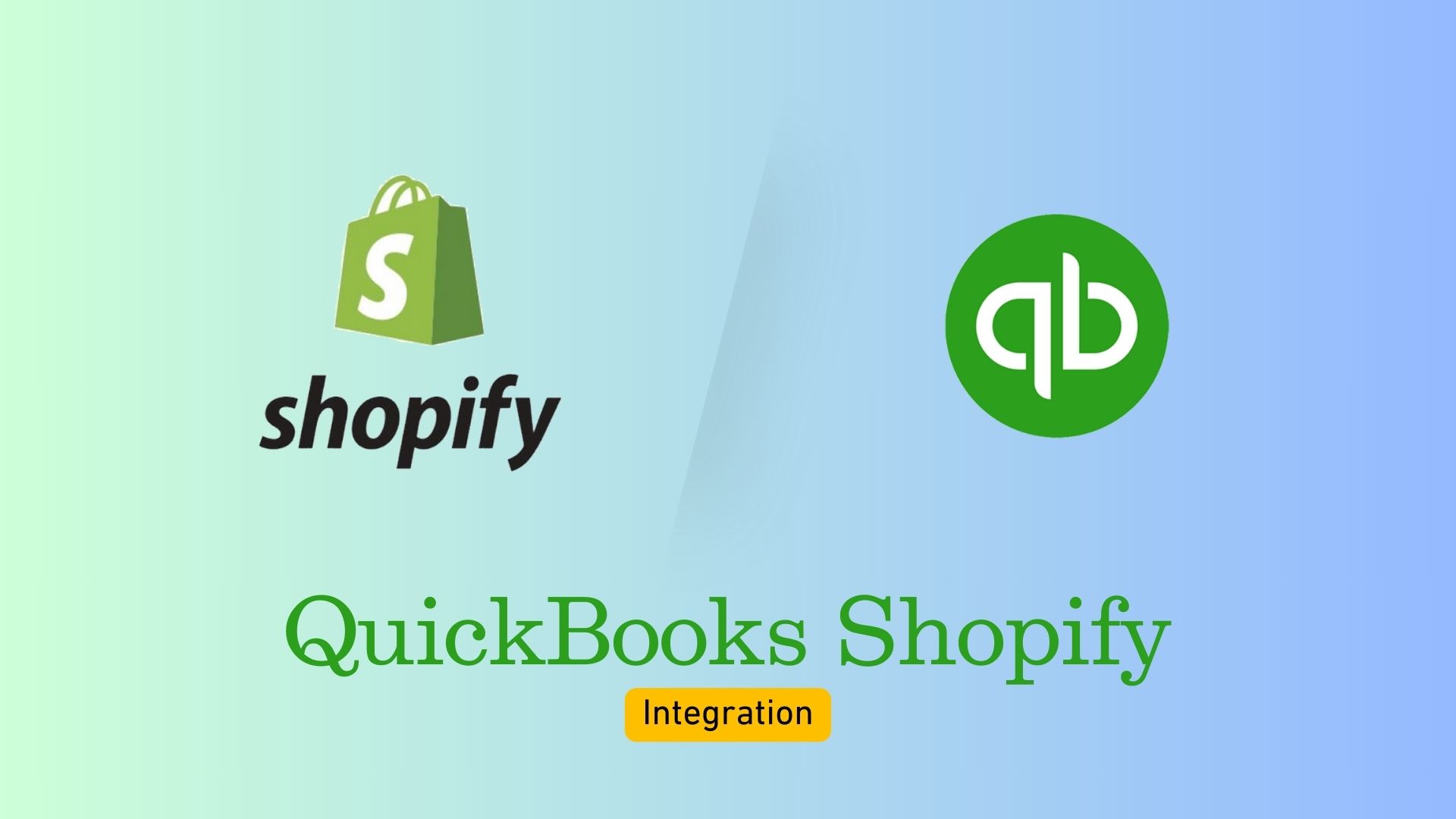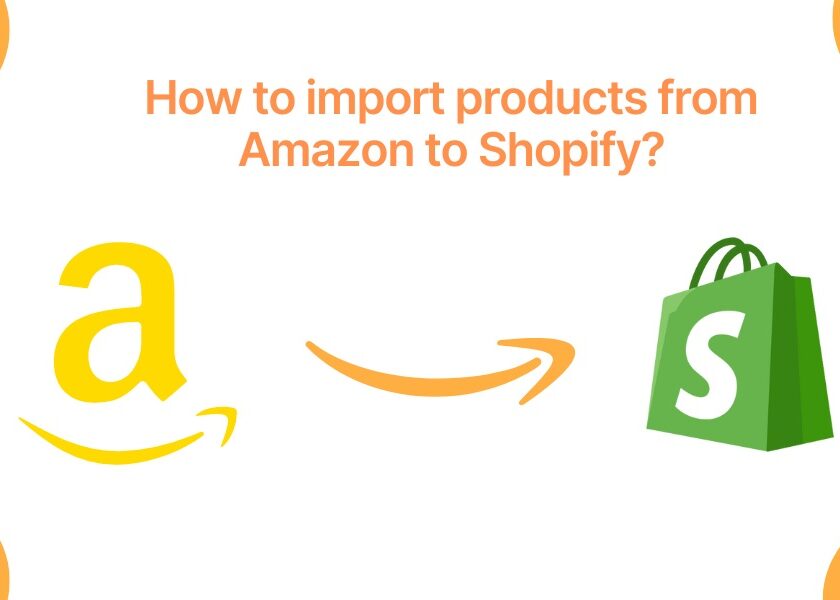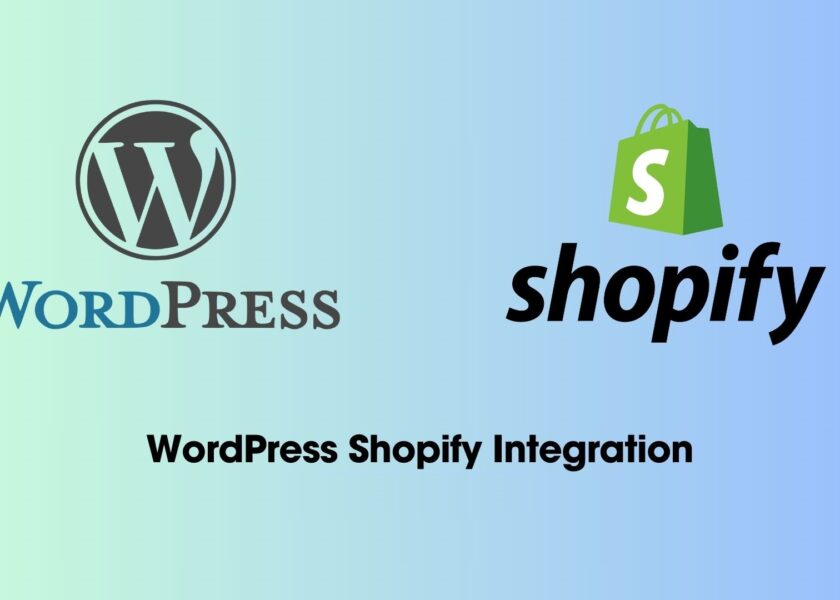Quickbooks Shopify Integration: The Complete Guides and Best Strategies

Financial management is crucial for businesses, as it allows them to plan for the future, understand their current financial situation, and identify potential risks and opportunities.
For eCommerce businesses, good financial management practices are essential to having control over their finances. It ensures that income and expenses are properly tracked and managed, which helps prevent fraud, reduce waste, and make better decisions.
To enhance their financial management, many eCommerce sites are now using QuickBooks for automated bookkeeping. In this article, BSS Commerce Shopify will discuss how Quickbooks Shopify integration can help improve financial practices and the overall management and growth of your Shopify store. Stay tuned for useful information below!
Contents
Introduction to QuickBooks
To know more about Quickbooks Shopify integration, in this section, BSS Commerce Shopify will provide a brief explanation of QuickBooks, how it works, and its features.
What is QuickBooks?
Intuit, a renowned software company, has developed and marketed QuickBooks, a widely used accounting software. It is predominantly utilized by small and medium-sized enterprises to effectively handle their financial operations, such as invoicing, payments, payroll, and expenses. QuickBooks offers a comprehensive range of functionalities, including income and expense tracking, invoice creation, financial report generation, and tax management.

In addition, QuickBooks provides features for inventory management and billable hour tracking for service-based businesses. This software is available in various versions, both desktop and online, and is compatible with a diverse array of devices, such as computers, smartphones, and tablets.
Main Features of QuickBooks
QuickBooks is an all-inclusive accounting software that provides a diverse array of functionalities to assist enterprises in effectively handling their financial matters. Among its key features are robust financial automation tools, which encompass:
- Invoicing: With QuickBooks, you can make and send invoices to customers, add your branding and logo, and monitor their progress.
- Expense tracking: Thanks to linking your bank and credit card accounts, uploading receipts, and categorizing expenses, you can effortlessly monitor and manage your expenses.
- Bank Feeds: QuickBooks provides a variety of bank feed tools to streamline your financial management. After connecting your bank account, you can gain a comprehensive view of your finances. These bank feeds also offer extensions that automate the tracking and management of bank transactions, securely import revenue and expense data, and generate reports on your banking and credit card transactions.
- Tax preparation: Organizing expenses into tax categories and tracking sales tax on income and expenses is made simple with QuickBooks. This allows you to have a clear understanding of your financial standing and the amount you owe.
- Inventory management: QuickBooks enables you to effectively track inventory levels, set reorder points, generate purchase orders, and stay on top of your orders and quantities in real-time.
- Capture and organize receipts: You can snap pictures of receipts with your phone. Keep everything in one location and match them to bills to keep organized and prepared for tax season.
- Insights and reports: QuickBooks makes it easy to create profit and loss statements, custom balance sheets, and keep track of overdue invoices.
Shopify also provides you with many kinds of reports. Read more here: Shopify Reports: How to Track & Improve Store Performance
Why Should You Integrate Shopify With Quickbooks?
“Can Shopify integrate with QuickBooks?” The answer is yes! This integration offers businesses the opportunity to enhance their accounting and financial management procedures. QuickBooks is just one of the numerous third-party applications that can be integrated with Shopify. And here are some reasons why you should integrate Quickbooks with Shopify.
- Accurate financial data: The integration guarantees the accuracy and currency of your financial data in both Shopify and QuickBooks. This enables you to effortlessly monitor sales, expenses, and taxes, empowering you to make well-informed decisions regarding your business finances.
- Time-saving measures: Quickbooks Shopify integration can greatly enhance efficiency by automating data transfer between the two platforms. This streamlined process eliminates the tedious and error-prone tasks of manual data entry and reconciliation, resulting in significant time savings.

- Enhanced inventory supervision: Integrating QuickBooks with Shopify can enhance your inventory management capabilities, enabling you to efficiently monitor real-time inventory levels and gain valuable insights into the performance of your top-selling products.
- Improved cash flow monitoring: The integration enables you to enhance your cash flow management by providing the ability to monitor pending payments, automate the creation of invoices, and swiftly reconcile payments.
- Increased operational efficiency: The integration of Shopify and QuickBooks offers numerous benefits that can greatly enhance the efficiency of your business operations. One of the key advantages is the elimination of duplicate data entry, which not only saves time but also reduces the risk of errors.
In general, this QuickBooks Shopify integration enables you to make well-informed decisions about your business by providing accurate and up-to-date financial information. By automating your financial management tasks, you can effectively utilize your time and effort in more important areas, such as building and promoting your eCommerce site’s brands and products. Keep in mind that time and effort are invaluable resources that cannot be purchased, so it is crucial to optimize their usage for the growth and success of your business.
Shopify Quickbooks Online Integration: Step-by-Step Instructions
You can easily establish the connection between Shopify and QuickBooks Online in just a few minutes by utilizing our straightforward setup procedure. Presented below is a Shopify and Quickbooks online integration guide that you should follow.
Step 1. Connect QuickBooks
Get started by establishing a connection between your applications and the QuickBooks Connector.
Step 2. Configuration
You can choose how you want your Shopify and QuickBooks Online integration to function by going through the configuration steps below. To make sure that the integration settings are customized to your business and accounting procedures, it will be better if you have a rudimentary understanding of accounting.
#1. Before you can begin creating your workflows, you must first set up your synchronization options. The following needs to be put in place:
- Account Timezone
- Integrations Starting Date
- Send me a sync report email
#2. You will have the option to choose from various workflows. Throughout this tutorial, BSS Commerce Shopify will select specific workflows to showcase the complete functionality of the setup procedure.
- Sales made on Shopify will be transmitted to QuickBooks Online as an invoice.
- Payouts received from Shopify will be recorded as deposits in QuickBooks Online.
- Products available on Shopify will be generated in QuickBooks Online.
- Updates on stock levels from QuickBooks Online will be forwarded to Shopify.
Small tip: Currently, the integration does not automatically synchronize order edits made in Shopify to QuickBooks Online. Therefore, any modifications such as adding or removing line items in an order within Shopify will require manual addition to the corresponding invoice in QuickBooks Online.

Invoice Generation Process
When you enable the workflow for creating a Sale in QuickBooks Online when an Order is created in Shopify, you will be prompted to:
- Configure the filters to specify the orders that will be fetched from Shopify. These filters will be based on the Order Status.
- Also, you can choose whether you want the sale to be generated as a Sales Invoice or Sales Receipt in QuickBooks Online.

Please configure the following settings by clicking on the Default Products and Advanced Options:
1. Order Number Prefix: The prefix you enter here will be added to all orders imported from your Shopify account. For instance, if you have an order ‘1234’ in Shopify and you set the prefix as ‘SPFY’ in the configuration, the order will be imported into QuickBooks Connector with the order number ‘SPFY1234’ and sent to QuickBooks Online accordingly.
2. Assign Sales to Class / Assign Sales to Location: These options allow you to select a default Class or Location within your QuickBooks Online system. This feature is exclusive to QuickBooks Online and can be utilized if you have already set up Classes or Locations in your QuickBooks company file.
3. Assign a customer record when creating a sales invoice in most accounting systems. This feature allows you to choose the type of customer record that will be created. By default, the Original Customer option is selected. However, if your Shopify customers provide a company name and you prefer to have that displayed in your accounting system, you can choose the Customer’s Organization option.
On the other hand, if you do not want any customer records to be created in your accounting system, you can select the Generic Online Sale Customer option. This means that all sales will be synchronized with your accounting system under a generic “Shopify” customer record, which you can create or leave blank to use the default Generic customer.
4. Automatic Invoice Numbering: This feature enables you to completely disregard the order number assigned by Shopify and instead utilize a sequential numbering system within your accounting software.
5. Discounted Product: Thanks to designating a specific ‘Item’ for discounts, you can easily monitor and track the discounts applied to your sales.
6. Rounding Off Product: Choose a preferred product that will be utilized as a line item when addressing rounding discrepancies in your transactions.
7. Utilize Shipping Item: In case you charge additional shipping fees to your customers, the integration allows you to specify a dedicated “Item” to accurately allocate these charges. This simplifies the tracking of revenue generated from shipping fees.
8. Due Date Offset: If transactions lack a due date, a due date type will be assigned based on the transaction date, the specified Due Date Offset, and the designated type. If left unset, the transaction date will be used as the due date.
9. Accept Credit Card Payments: Enable this option if you wish to accept credit card payments for your transactions.

You will then be directed to the tax configuration page where you need to choose the appropriate tax code in QuickBooks Online for each tax that has been created in your Shopify.

You have the option to choose how you would like to align your Shopify products with your QuickBooks Online products. You can opt to match them based on their Name or SKU. To ensure seamless integration of sales with your accounting system, each of your Shopify items must have a distinct SKU assigned to it.
Take Note: With the integration of QuickBooks Online, we offer two options for product matching:
- Option 1: NAME
- Option 2: SKU

Furthermore, if you desire the inclusion of fresh items from your Shopify invoices in QuickBooks Online, you can easily accomplish this by checking the designated box before activating the Create New Items in QuickBooks Online feature. Within this particular section, you will need to designate the appropriate income and expense accounts for both your inventoried and non-inventoried items.
Take Note: The COGS account for the products can only be assigned during creation using QuickBooks Connector. However, it is important to note that the COGS price of products will not be synchronized.

The Send Payments from Shopify to Quickbooks Online settings provide you with the option to choose whether you wish to record payment information from Shopify against your sales in Quickbooks Online.

To assign various payment methods to distinct clearing accounts, you can accomplish this by selecting the Advanced Options link.

You can also choose to generate Credit Notes in QuickBooks Online. In this process, you will need to assign a Fallback account from which the refunded payment will be deducted. In addition, you will be prompted to enter your desired Refund Number Prefix, which will be added before the refund receipt number.
Take Note: To synchronize credit notes with your accounting app, choose the Refunded and Partially Refunded status on the Order filter.

Furthermore, within the integration, you have the option to sync Shopify Fees as Expenses under Bills in QuickBooks Online.
Take Note: To synchronize Fees in QuickBooks Online, the Payment Method accounts in the Payments section should be set up as per the guidelines below:
- For QuickBooks US and CA users, configure Credit Cards or Checking Bank accounts.
- For QuickBooks AU and UK users, set up Cash accounts.
- For users in other regions, feel free to configure any account that suits your needs.
Payouts Sync Workflow
Enabling the synchronization of the payouts workflow empowers the QuickBooks Connector to automatically generate deposits in QuickBooks Online for the payouts that are sent to your Shopify account.
Take Note: To ensure that Payouts sync with QuickBooks Online seamlessly, we suggest disabling the Orders workflow mentioned above. Failure to do so may result in duplicated revenue if the setup is not done correctly.
During the setup process, you will be prompted to map the Into Bank Account field. This field will be used to record your Shopify Payouts as a Bank Transaction. It is important to note that the selected account must be either an “Other Current Asset” or a “Bank” account. This account will be listed in the Chart of Accounts and will be the account you choose when viewing your Deposit in your QuickBooks Online account.
To access the Deposits created in QuickBooks Online, follow these steps:
- Go to the Accounting section
- Select Chart of Accounts
- Choose the account assigned to the Into Bank Account field

In the section for creating a deposit, you will need to designate the Default Payment Method. Choose a payment method here, which will be utilized if the payment method from Shopify is not available in the payouts.
- Use the Income Accounts Section:
Select the appropriate income account here to map different Payment Methods to specific clearing accounts. Any Payment Methods without an assigned Income Account will be sent to the set Default Account.
- Use the Expense Accounts Section:
Choose the expense account here to map the Fees, Charges, and Taxes portion of the Payout.

Product Creation Workflow
To ensure seamless integration between your Shopify and QuickBooks Online platforms, simply enable the “When a Product is created on Shopify, create new Items in QuickBooks Online” workflow.
By doing so, all your new products from Shopify will automatically be generated in QuickBooks Online. In addition, you will need to specify the income and expense accounts to be associated with your inventoried and non-inventoried items.
Take Note: The COGS account for the products can only be assigned during creation using QuickBooks Connector. However, it is important to note that we will not synchronize the COGS price of the products.

Stock Update Workflow
When you enable the workflow to update stock levels in Shopify when stock levels are updated in QuickBooks Online, you will be prompted to choose the method of matching items to QuickBooks Online items, either by Name or SKU. In addition, you will need to specify the Store Location where the stock should be updated.
Take Note: If you have already set up stock levels in QuickBooks Online before integrating, you should enable this option. Otherwise, enabling it may result in the deletion of your Shopify stock levels.

Step 3. Sync
Your account is fully prepared to synchronize your data seamlessly across all your applications! With auto-sync enabled, your account will automatically sync every hour, but you also have the flexibility to manually trigger a sync at any time.
Click on the Sync Now button located in the Synchronization Options section at the top of your Manage tab.
🎁 🎁 🎁 QuickBooks Online
Best Strategies for Precise Shopify Integration with Quickbooks
Careful planning and continuous monitoring are essential for the successful integration of Shopify and QuickBooks. With these suggestions, you can guarantee a streamlined financial operation that brings significant benefits to your business.

Set Up Your Accounts Correctly
Before initiating the integration between Shopify and QuickBooks, it is crucial to ensure that your accounts are properly configured on both platforms. This entails creating the essential products, customers, and tax codes in QuickBooks, as well as establishing payment methods and shipping rates in Shopify.
Select the Appropriate Integration Method
There are multiple methods available for Shopify integration with QuickBooks, such as utilizing third-party applications or developing custom code. Select the approach that aligns most effectively with your business requirements and technical proficiency.
Automate Data Syncing
Integrating Shopify with QuickBooks offers a significant advantage by automating the synchronization of data between the two platforms. Thanks to setting up automatic syncing, you can guarantee that your sales data, inventory, and financial information remain constantly updated.
Regularly Monitor the Accuracy of Your Data
The crucial step is to consistently verify the precision of your data, even with the implementation of automation. It is recommended to regularly examine the synchronization of your sales orders, inventory, and financial data between Shopify and QuickBooks to ensure accuracy.
Perform Regular Reconciliations
Regularly reconciling your Shopify and QuickBooks accounts is crucial for identifying discrepancies and maintaining accurate financial records. This practice not only helps reconcile sales, expenses, and inventory but also ensures the integrity of your financial data.
Leverage Reporting Tools for Insights
Both platforms, Shopify and QuickBooks, provide reporting tools that enable you to analyze your sales and financial data effectively. Using these robust tools will help you gain useful information about your business performance, empowering you to make well-informed decisions that drive growth and success.
Quickbooks Shopify Integration: The Final Verdict
Financial management plays a crucial role in the success of any business. Thanks to effectively managing your finances, you can plan for the future, maintain control over your financial activities, evaluate performance, comply with regulations, and secure the necessary capital for growth and success.
As a result, learn the benefits of the QuickBooks Shopify integration and discover how it can enhance your financial management. You can optimize your financial management tasks to their fullest potential. It is important to prioritize cost control, as it directly impacts the profitability of your Shopify store.
Hope that these sharings about QuickBooks Shopify integration and the best strategies to integrate effectively will be helpful for you in any situation. Visit the BSS Commerce Shopify blog frequently to refer to the most relevant information in the eCommerce industry here.
Empower your Shopify online store by integration with other platforms:
- HubSpot Shopify Integration: Full Guide & Best Practices
- Top 10 Shopify Integrations To Enhance Your Online Store
- Mailchimp to Shopify Integration: Beyond The Effective Email Marketing
- Shopify Amazon Integration: Expand Your E-commerce Business
- Shopify POS Integration: Are These Superior To Shopify POS
- Shopify ERP Integration Guide: Streamline Your Business
- How to connect Shopify to Instagram – Step-by-step Guide




